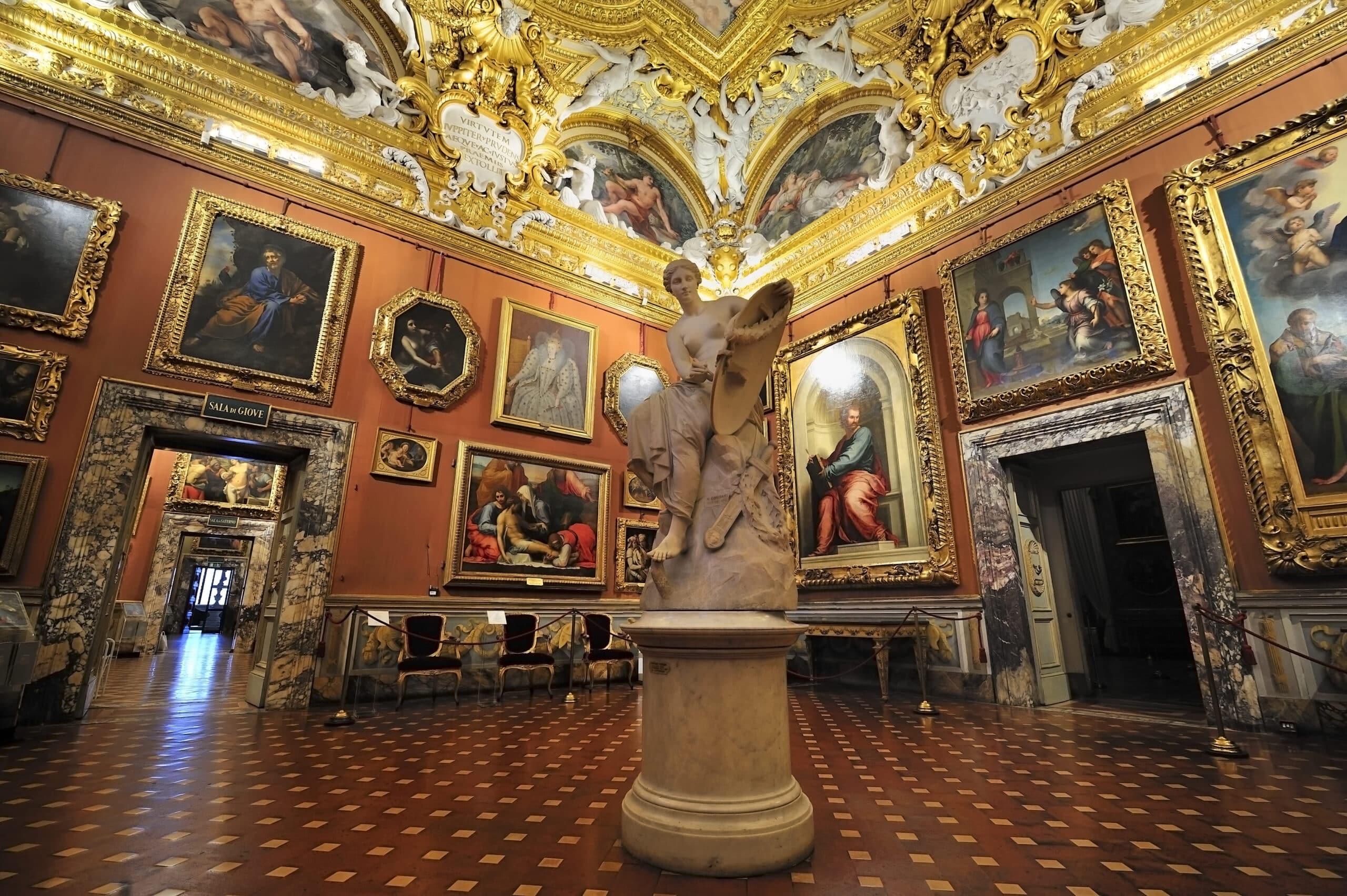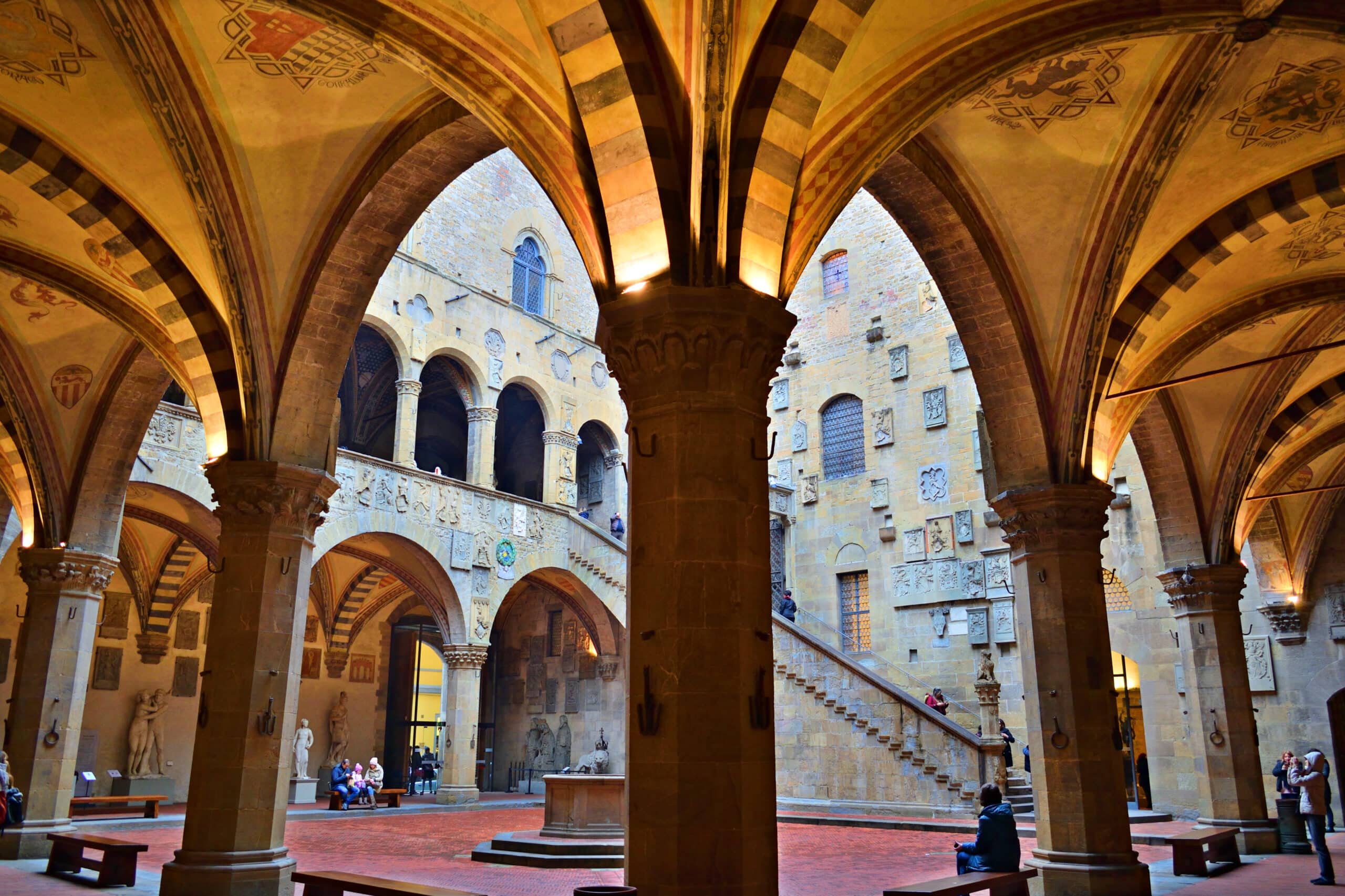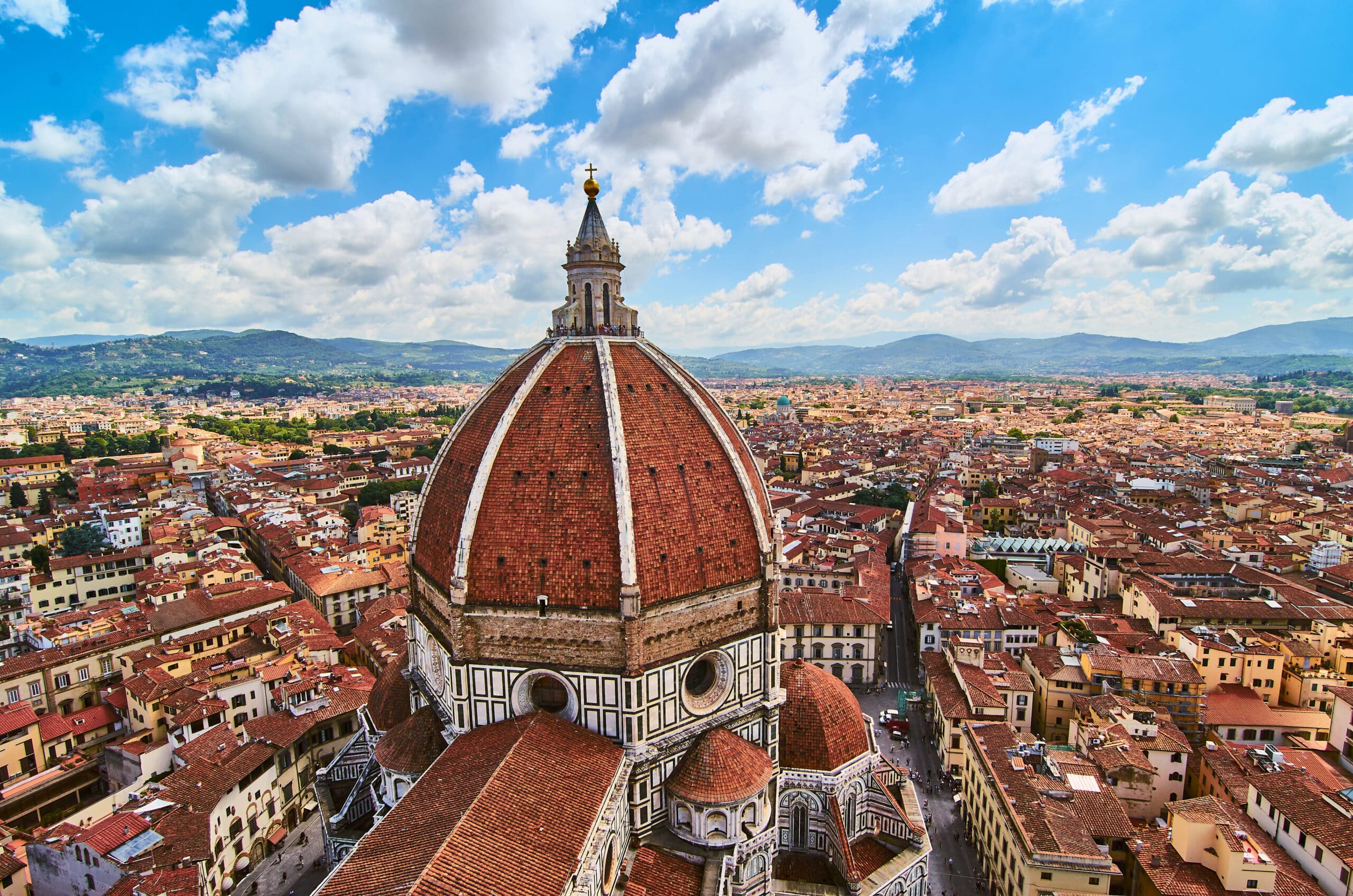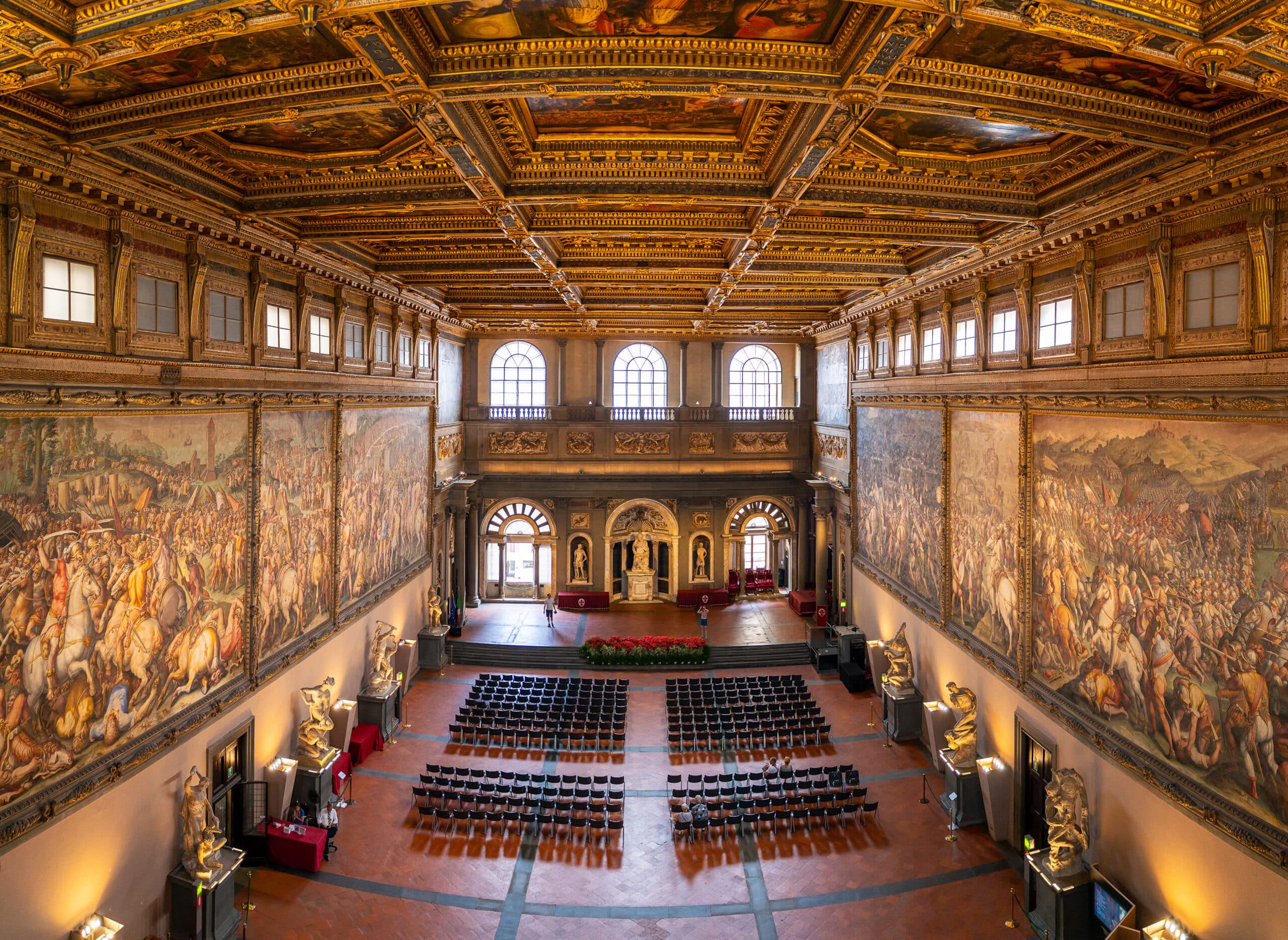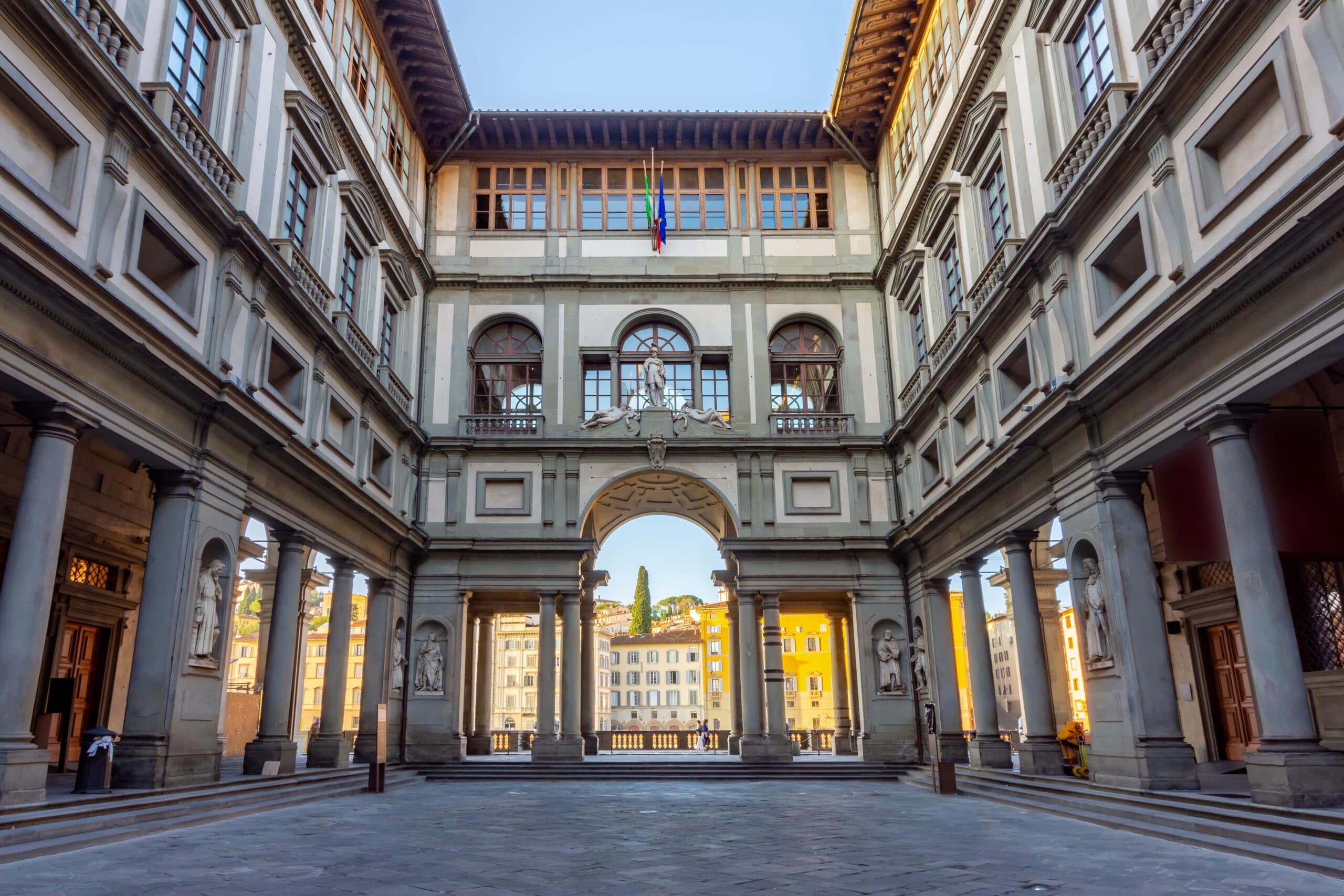The visit to the Accademia Gallery will lead you to discover one of the greatest geniuses of the Renaissance: Michelangelo Buonarroti, from his early period when he sculpted the famous David, to his more mature phase with the Prisoners.
The Gallery also houses a large collection of 14th-century panel paintings of religious subjects, extending up to the late 16th century.
A significant part of the collection also helps us better understand the techniques used to create these colossal sculptures: this is the Gipsoteca, with its vast collection of plaster casts by Master Lorenzo Bartolini.
This complex also includes the Gallery dedicated to musical instruments that once belonged to the Medici and Lorraine families, later donated to the Accademia by the Cherubini Conservatory of Music in Florence. We will also admire a viola crafted by the famous Cremonese luthier Stradivari.
The existing building was modified and renovated specifically to house Michelangelo’s giant David, which originally stood in Piazza della Signoria; it was later joined by the Prisoners from Boboli and the Saint Matthew from the Opera del Duomo.
Upon entering, you are immediately immersed in the Florentine Renaissance atmosphere of the time. It almost feels as if you can see the young Michelangelo climbing the scaffolding to finish his gentle giant.
The visit will begin in the Hall of the Colossus, where you can admire the preparatory plaster model of The Rape of the Sabines by Giambologna, surrounded by beautiful 15th-century paintings.
The tour continues through the Gallery of the Prisoners, culminating in the Tribune that houses Michelangelo’s David.
Continuing on, you will be able to admire the Gipsoteca and the rooms dedicated to panel paintings together.
The Gallery often also hosts interesting temporary exhibitions.

